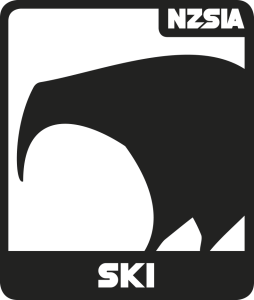Gliding Wedge
 What, Why, How
What, Why, How
What
A gliding wedge is created by blending lateral and rotational movements of the legs to form a wedge shape with the skis.
Why
A gliding wedge is used because it prepares skiers to move around the mountain independently and to turn.
How
On the same easy terrain that straight runs were practised, introduce skiers to lateral and rotational movements of the legs to develop the wedge shape of the skis.
VIDEO: Gliding Wedge
 Technical Know-how
Technical Know-how
What’s New
The wedge position with the skis, and gliding with the wedge.
Performance Tips
Body: Focus on combining lateral and rotational movements of the legs to create the wedge

Skills
Situational Understanding
- Use a gentle slope with a flat run off
- Introduce a stopping wedge before taking skiers up an inclined slope
- Keep the speed of travel slow
- If using wider skis, understand edging will become harder and steering will become easier
Active Stance & Balance
- Increase the skier’s stability by moving the feet further apart, creating a wider base of support
- Keep the upper body stable to allow angulation to develop as the wedge is created
Outside Ski Balance
- Introduce feelings of the arch for both feet
- The skier will balance on the inside edge of both skis, the centre of gravity remains between the feet
Edging
- Create edge naturally by standing with a wider base of support
- Use abduction to move the feet out to the side, introducing the skier to angulation
Steering
- Internal rotation of both femurs is used to turn the tips of the skis inwards, creating the wedge shape
- Muscular engagement is required to maintain the wedge shape of the skis; as the skier slides forward forces will act on the skier pushing the skis back to parallel
Ski Snow Interaction
- Opposing steering angles are introduced to create the wedge shape
- Edge angles are developed by standing with the skis in a wedge shape, creating grip between the skis and the snow
- Platform angles will need to be greater than 90 degrees on both skis to allow the skis to slide smoothly on the snow
 Teaching Tactics
Teaching Tactics
Terrain
The best terrain is a gentle slope with a flat or uphill run out. Introducing the wedge should ideally be taught on the same terrain as straight runs.
Class Handling
Start teaching a wedge on the same easy terrain where straight runs were performed, this will build confidence in your students. Students at this point might still be sidestepping or walking back up the hill, so take things easy and give lots of practice time. Having your students in a line is a good way to control the group and allow your students to slowly increase the length of the run they are doing. Once you have confidence that students have control through their gliding wedge, then many ski areas will have easy conveyor lifts to make the run longer without students having to walk. Make sure you consider how you are going to safely get your students on and off any conveyor lifts.
Example Activities
- Show a wedge on the flat, and try it
- Step into the wedge on the flat, jump into a wedge on the flat
- While on flat, push forward with poles and brush/slide into a wedge
- Start in a straight run and then slide into a wedge
- Focus on the legs creating the wedge
- Encourage students to feel the legs moving laterally
- Encourage students to feel the legs moving rotationally
- Focus on smoothly moving into a wedge
- Make the run longer
- Try varying the wedge size - bigger slower, smaller faster
- Try adjusting size and speed on demand
- Ensure that a good stable gliding wedge is being achieved before introducing turning

